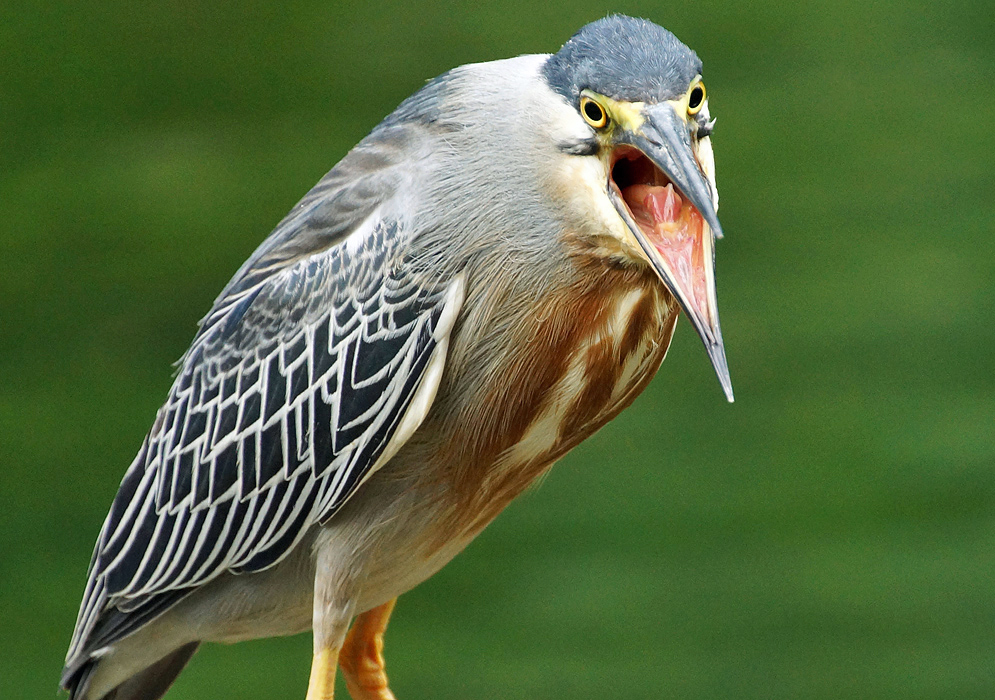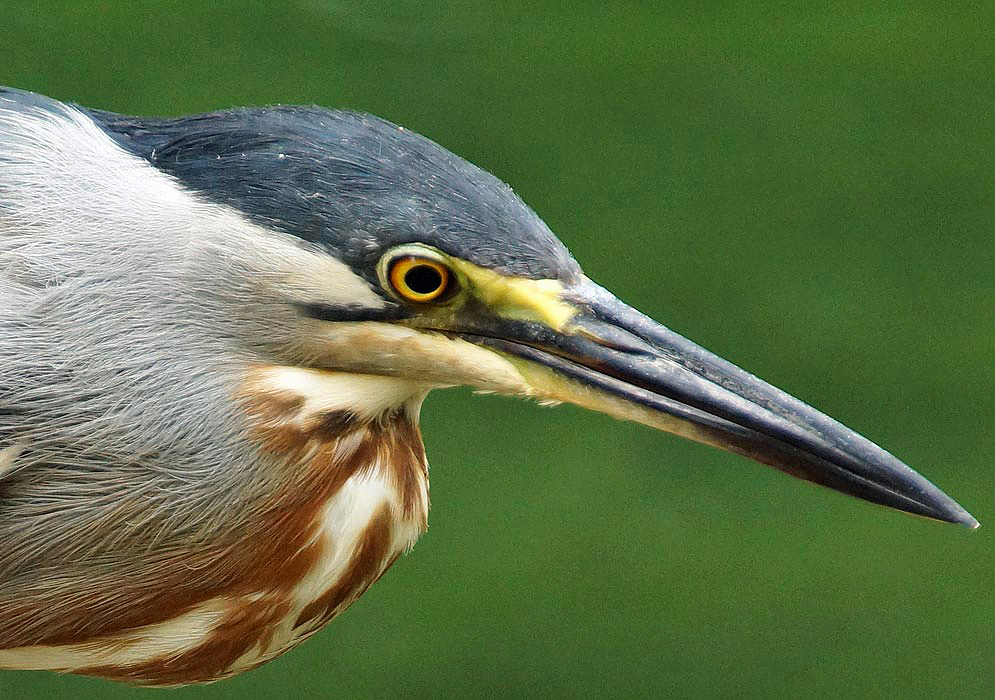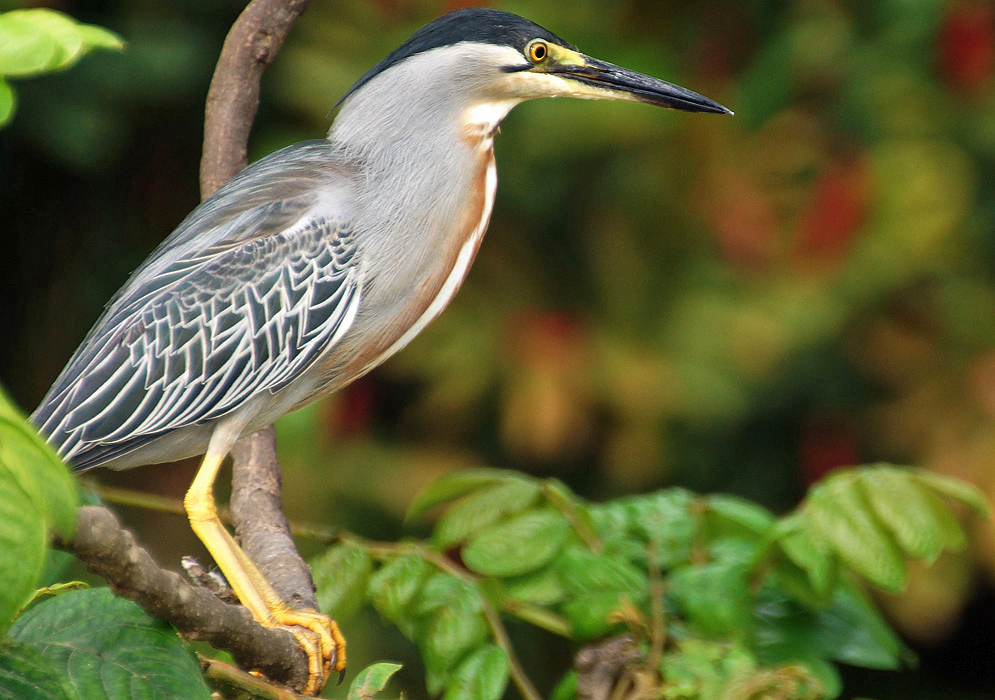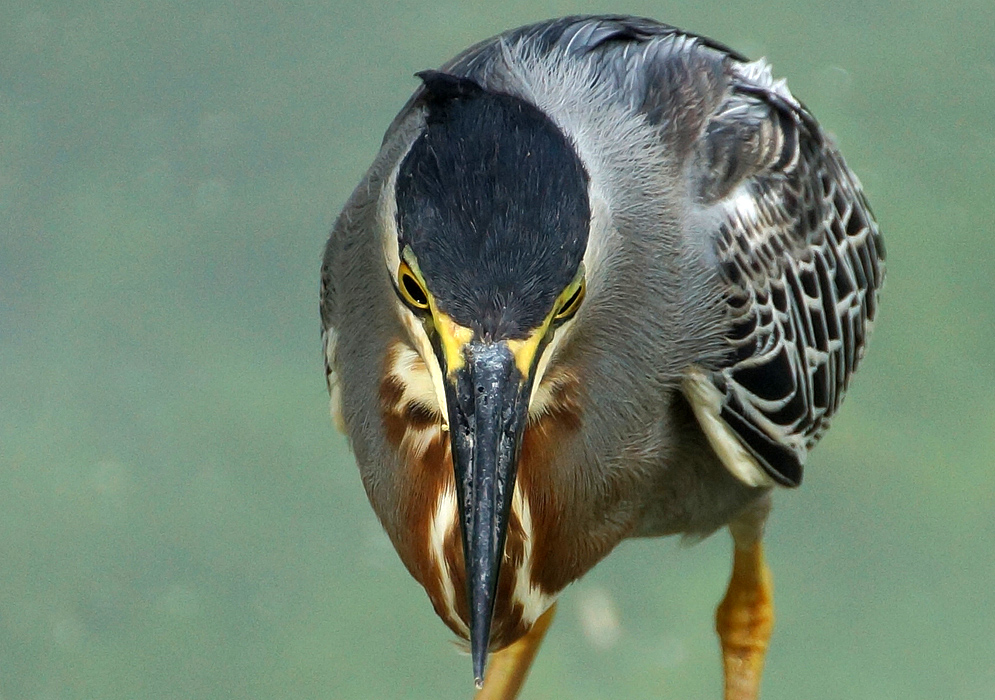This post has 11 Simple Fields-fields attached. Show fields.

The Striated Heron, is a small heron species measuring about 17 inches in length, weighing 4.6–8.8 ounces, and with a wingspan of 20–24 inches. The plumage of adults features a blue-grey back and wings, white underparts, a black cap, a dark line extending from the bill to under the eye, and short yellow legs. Juveniles, in contrast, are browner above and streaked below. This species exhibits a fascinating hunting technique where it stands still at the water's edge to ambush prey, primarily feeding on small fish, frogs, and aquatic insects. Striated herons are also known for using bait to catch fish, a behavior not commonly observed in birds. They drop a feather or leaf on the water's surface and pick up fish that come to investigate. Additionally, there's a peculiar, unexplained behavior observed in nesting adults, where they make rapid back-and-forth movements with a stick held in their bill, akin to a sewing machine's needle. Young birds, when feeling threatened, display a unique posture by stretching their necks and pointing their bills skyward, although the effectiveness of this defense mechanism against predators is unknown. The Striated Heron is widespread and generally common. It is classified as a species of "least concern" by the IUCN. The bird inhabits a range of environments, from artificial aquatic areas like canals and ponds to natural settings like mangrove forests, grasslands, and wetlands. They are found in continents and regions including North America, Asia, South America, and Africa. Notably, Striated Herons adapt well to urban environments, often seen in mangroves, intertidal flats, marinas, and boat ramps, indicating a level of comfort in human-altered landscapes. Photographed in northern Colombia.









